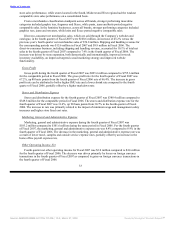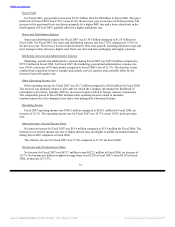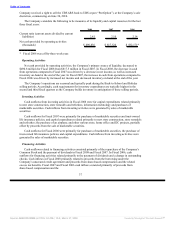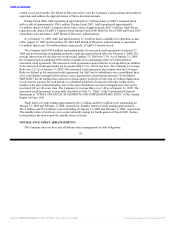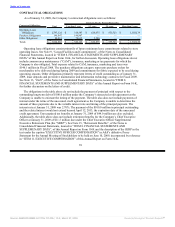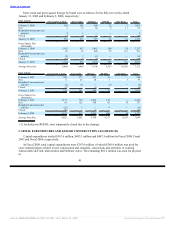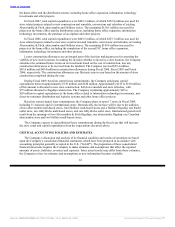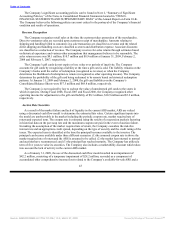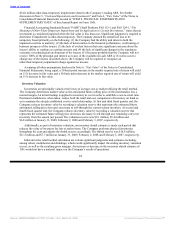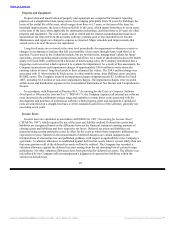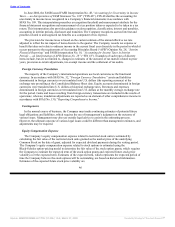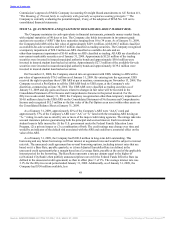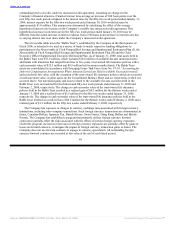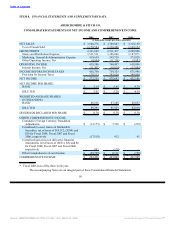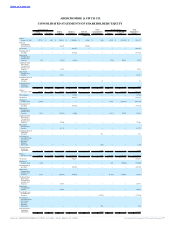Abercrombie & Fitch 2008 Annual Report Download - page 46
Download and view the complete annual report
Please find page 46 of the 2008 Abercrombie & Fitch annual report below. You can navigate through the pages in the report by either clicking on the pages listed below, or by using the keyword search tool below to find specific information within the annual report.
Table of Contents
The Company’s significant accounting policies can be found in Note 2, “Summary of Significant
Accounting Policies,” of the Notes to Consolidated Financial Statements located in “ITEM 8.
FINANCIAL STATEMENTS AND SUPPLEMENTARY DATA” of this Annual Report on Form 10-K.
The Company believes the following policies are most critical to the portrayal of the Company’s financial
condition and results of operations.
Revenue Recognition
The Company recognizes retail sales at the time the customer takes possession of the merchandise.
Direct-to-consumer sales are recorded upon customer receipt of merchandise. Amounts relating to
shipping and handling billed to customers in a sale transaction are classified as revenue and the related
direct shipping and handling costs are classified as stores and distribution expense. Associate discounts
are classified as a reduction of revenue. The Company reserves for sales returns through estimates based
on historical experience and various other assumptions that management believes to be reasonable. The
sales return reserve was $9.1 million, $10.7 million and $8.9 million at January 31, 2009, February 2,
2008 and February 3, 2007, respectively.
The Company’s gift cards do not expire or lose value over periods of inactivity. The Company
accounts for gift cards by recognizing a liability at the time a gift card is sold. The liability remains on the
Company’s books until the earlier of redemption (recognized as revenue) or when the Company
determines the likelihood of redemption is remote (recognized as other operating income). The Company
determines the probability of the gift card being redeemed to be remote based on historical redemption
patterns. At January 31, 2009 and February 2, 2008, the gift card liabilities on the Company’s
Consolidated Balance Sheets were $57.5 million and $68.8 million, respectively.
The Company is not required by law to escheat the value of unredeemed gift cards to the states in
which it operates. During Fiscal 2008, Fiscal 2007 and Fiscal 2006, the Company recognized other
operating income for adjustments to the gift card liability of $8.3 million, $10.9 million and $5.2 million,
respectively.
Auction Rate Securities
As a result of the market failure and lack of liquidity in the current ARS market, ARS are valued
using a discounted cash flow model to determine the estimated fair value. Certain significant inputs into
the model are unobservable in the market including the periodic coupon rate, market required rate of
return and expected term. The coupon rate is estimated using the results of a regression analysis factoring
in historical data on the par swap rate and the maximum coupon rate paid in the event of auction failure.
In making the assumption of the market required rate of return, the Company considers the risk-free
interest rate and an appropriate credit spread, depending on the type of security and the credit rating of the
issuer. The expected term is identified at the time the principal becomes available to the investor. The
principal can become available under three different scenarios: (1) the assumed coupon rate is above the
market required rate of return and the ARS is assumed to be called; (2) the market has returned to normal
and auctions have recommenced; and (3) the principal has reached maturity. The Company has utilized a
term of five years to value its securities. The Company also includes a marketability discount which takes
into account the lack of activity in the current ARS market.
As of January 31, 2009, the use of the discounted cash flow model resulted in an impairment of
$42.2 million, consisting of a temporary impairment of $28.2 million, recorded as a component of
accumulated other comprehensive income (loss) related to the Company’s available-for-sale ARS and a
43
Source: ABERCROMBIE & FITCH CO /DE/, 10-K, March 27, 2009 Powered by Morningstar® Document Research℠


